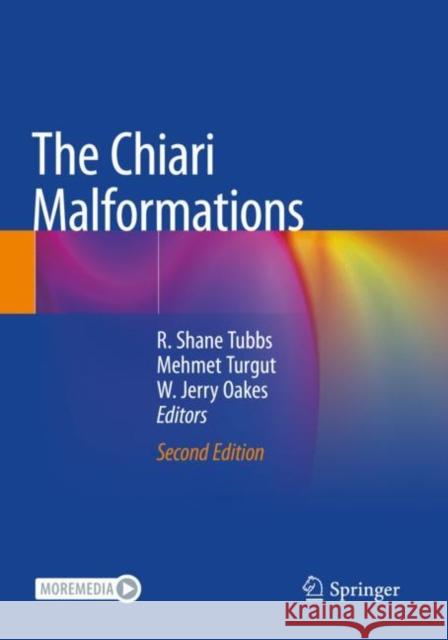The Chiari Malformations » książka



The Chiari Malformations
ISBN-13: 9783030448646 / Angielski / Miękka / 2021 / 627 str.
The Chiari Malformations
ISBN-13: 9783030448646 / Angielski / Miękka / 2021 / 627 str.
(netto: 595,63 VAT: 5%)
Najniższa cena z 30 dni: 597,58
ok. 22 dni roboczych
Bez gwarancji dostawy przed świętami
Darmowa dostawa!
Part 1: General Aspects of the Chiari Malformations
Chapter 1: Classification of the Chiari Malformations
Chapter 2: History of the Chiari Malformations
Chapter 3: Epidemiology of the Chiari Malformations
Chapter 4: Genetics of the Chiari Malformations
Chapter 5: Natural History of the Chiari Malformations
Part 2: Embryology, Anatomy, and Radiologic Features of the Chiari Malformations
Chapter 6: Embryological Development of the Posterior Cranial Fossa and Hindbrain
Chapter 7: Gross Anatomy of the Chiari Malformations
Chapter 8: Pathology of the Chiari Malformations
Chapter 9: Radiologic Features of the Chiari Malformations
Chapter 10: Measurements of the Posterior Fossa Volume Using MRI
Chapter 11: Volumetrics in symptomatic vs. asymptomatic CIM
Chapter 12: Role of Cerebrospinal Fluid Flow Patterns at the Cranial-Vertebral Junction in Surgery
Chapter 13: Research on the Pathophysiology of Chiari I-Related Symptoms and Syringomyelia, with Emphasis on Dynamic MRI Techniques
Chapter 14: Sagittal MRI Overestimates the Diagnosis of Chiari I Malformations
Part 3: Clinical Presentation of the Chiari Malformations
Chapter 15: Clinical Presentation of the Pediatric Chiari I Malformation
Chapter 16: Clinical Presentation of the Adult Chiari I Malformation
Chapter 17: Symptoms of the Chiari II Malformation
Chapter 18: Unusual Presentations of the Chiari Malformations
Chapter 19: Hemifacial Spasm Associated with Chiari 1 Malformation
Chapter 20: Central Sleep Apnea in Pediatric Chiari Malformations
Chapter 21: Vertigo in the Chiari Malformations
Chapter 22: Neuro-ophthalmological Findings in the Chiari Malformations
Chapter 23: Syringomyelia and the Chiari Malformations
Part 4: Differential Diagnosis
Chapter 24: Incidental Tonsillar Ectopia
Chapter 25: Achondroplasia and Tonsillar Ectopia
Chapter 26: Acquired Tonsillar Ectopia and How Different from Congenital Chiari I malformation
Part 5: Treatment of the Chiari Malformations
Chapter 27: Treatment of the Adult Chiari I Malformation
Chapter 28: Treatment of the Pediatric Chiari I Malformations
Chapter 29: Treatment of the Pediatric Chiari II Malformations
Chapter 30: Duraplasty Versus Non-dural Opening for the Treatment of Chiari I Malformation
Chapter 31: Role of Intraoperative Neuromonitoring for Chiari Malformations
Chapter 32: Role of Intraoperative Ultrasonography for Chiari Malformations
Chapter 33: Secondary Surgery for Chiari I Malformations
Chapter 34: Ventral Decompression for Chiari Malformations
Chapter 35: Complications of Chiari Surgery
Chapter 36: Outcomes for Treatment of the Chiari Malformations
Chapter 37: Treatment of Spinal Deformity Associated with Chiari Malformations
Part 6: Prognosis of the Chiari Malformations
Chapter 38: Reversibility of the Chiari II Malformation Following Repair of Myelomeningocele
Chapter 39: Hydrocephalus
Chapter 40: Associated Disorders of the Chiari I malformation
Chapter 41: Scoliosis in Chiari Malformations with Syringomyelia
Chapter 42: Associated Bony Malformations and Instability in the Chiari I Malformations
Chapter 43: Craniosynostosis and Chiari I malformation
Chapter 44: Is There an Association between Fibromyalgia, Chronic Fatigue, and the Chiari I Malformation
Chapter 45: Is there an Association between Autism and Chiari I malformation
Part 8: Research on Chiari Malformations and Related Pathologies
Chapter 46: Newer Subsets of the Chiari Malformations
Chapter 47: Chiari-Like Malformation in Dogs
Chapter 48: Experimental Chiari Malformation Animal Models
Chapter 49: Molecular Biology of Skull Base Formation
Chapter 50: Experimentally Induced Syringomyelia
Chapter 51: Folic Acid and the Chiari II malformations
Chapter 52: Gene Mutations and the Chiari Malformations
Chapter 53: Predictive Model Analysis of Chiari I Malformation
Chapter 54: Chiari 1000 registry from Cleveland Clinic
Part 9: Miscellaneous
Chapter 55: A Multidisciplinary Clinic fort the Management of Chiari I Malformation
Chapter 56: Non-Hindbrain-Related Syringomyelia
Chapter 57: A Patient’s Guide to Chiari Malformations
This unique, contemporary book is the successor edition of a ground-breaking, authoritative title devoted to the pathology and treatment of chiari malformations. Since an abundance of research and development has occurred after the publication of the Chiari Malformations this updated title meets the market need for a reference that reflects such advances in the field.
Chiari Malformations, 2nd Edition is divided into nine sections. Opening sections feature chapters on general aspects, diagnostic features and clinical presentation. These are followed by sections on differential diagnosis, treatment and prognosis. Finally, the book closes with an extensive discussion on research, related pathologies and patient resources. Expertly written chapters are supplemented with numerous high-quality illustrations and images to aid in visual learning.
An impressive, nuanced successor, Chiari Malformations, 2nd Edition, is an invaluable resource for neuroscientists and clinicians at all levels, as well as graduate students to specific research scientists studying this region.
1997-2025 DolnySlask.com Agencja Internetowa
KrainaKsiazek.PL - Księgarnia Internetowa









